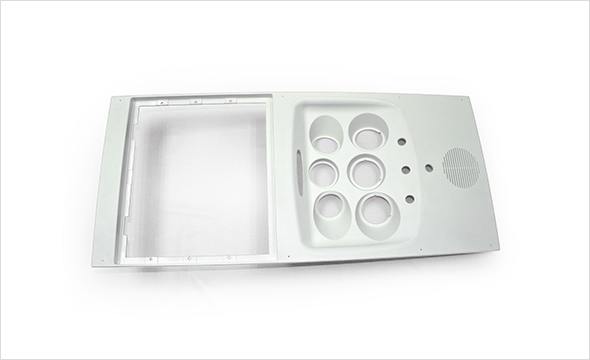
Project Information
- Name Example Theme Customize
Flight Control Part
An plastic injection-molded flight control part refers to a component used in the construction of aircraft flight control systems, which is manufactured using the plastic injection molding process. These parts play crucial roles in controlling the movement of an aircraft’s flight surfaces, such as the ailerons, elevators, rudders, and flaps. Here are some examples of injection-molded flight control parts:
- Control Surface Components: These are parts that directly attach to the movable flight control surfaces of the aircraft, such as aileron hinges, elevator horns, rudder pedals, or flap brackets. These components are designed to withstand aerodynamic forces and provide reliable control surface movement.
- Linkage Components: Injection-molded linkages connect the flight control surfaces to the control mechanism inside the aircraft. These may include pushrods, control rods, bellcranks, or torque tubes, which transmit pilot input to the control surfaces.
- Fairings and Covers: Injection-molded fairings and covers provide aerodynamic shaping and protection for flight control mechanisms. These parts may enclose control linkages, hinges, or actuation mechanisms to streamline airflow and reduce drag.
- Mounting Brackets and Supports: Plastic injection-molded mounting brackets or supports may be used to secure flight control components to the aircraft’s structure. These parts provide structural integrity and ensure proper alignment and operation of the flight control system.
- Control System Components: Certain flight control systems incorporate electronic or hydraulic components that require housing or mounting within the aircraft. Injection-molded parts such as control system enclosures, housings, or mounting brackets may be used for these purposes.
Plastic Injection molding offers several advantages for manufacturing flight control parts, including the ability to produce complex geometries, high repeatability, and cost-effectiveness for large production runs. Additionally, modern engineering-grade plastics used in injection molding offer excellent strength-to-weight ratios, durability, and resistance to environmental factors such as temperature extremes and chemical exposure, making them well-suited for aerospace applications. Materials commonly used for injection-molded flight control parts include engineering thermoplastics such as nylon, polycarbonate, and various blends of ABS (Acrylonitrile Butadiene Styrene).


